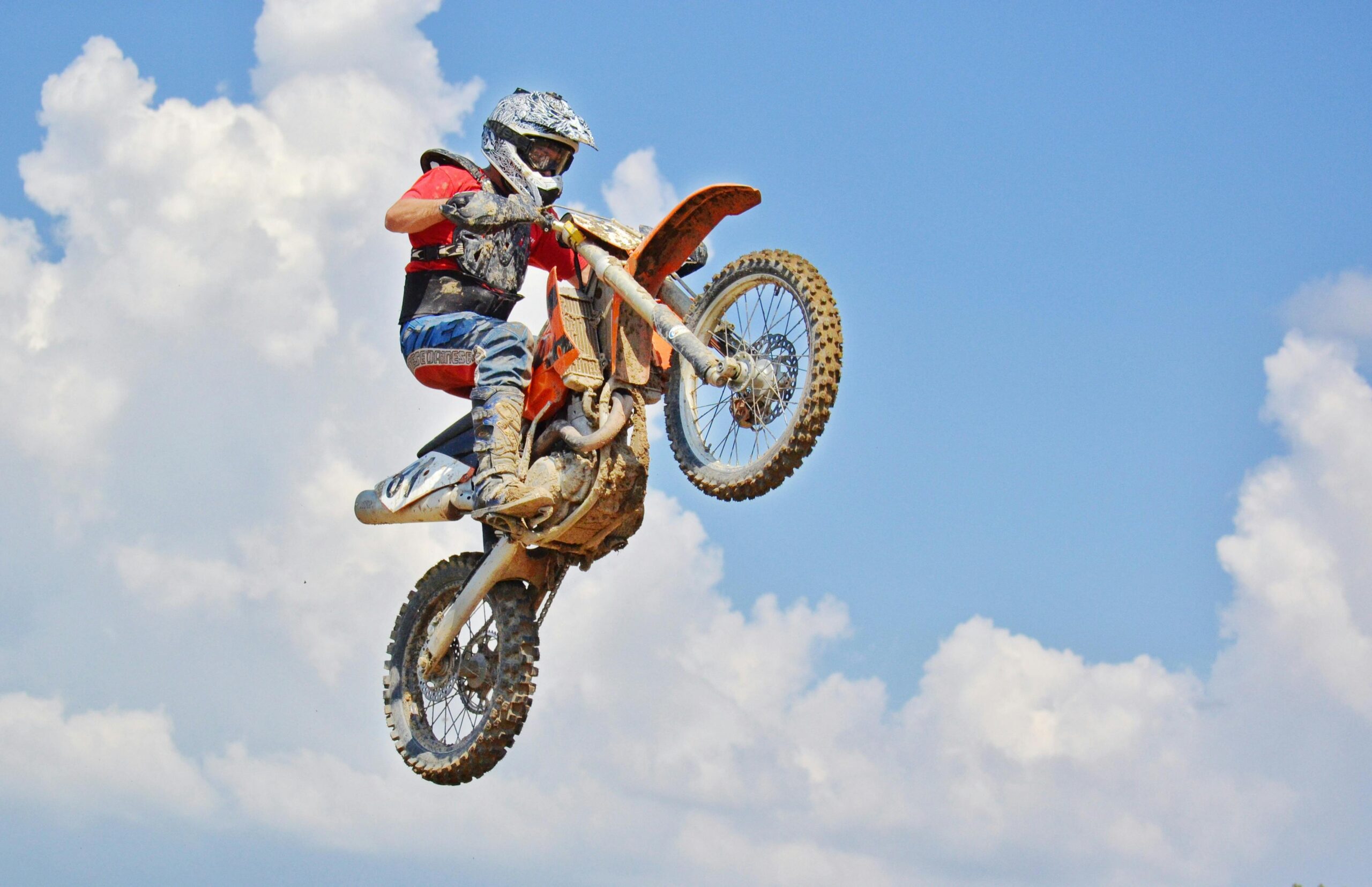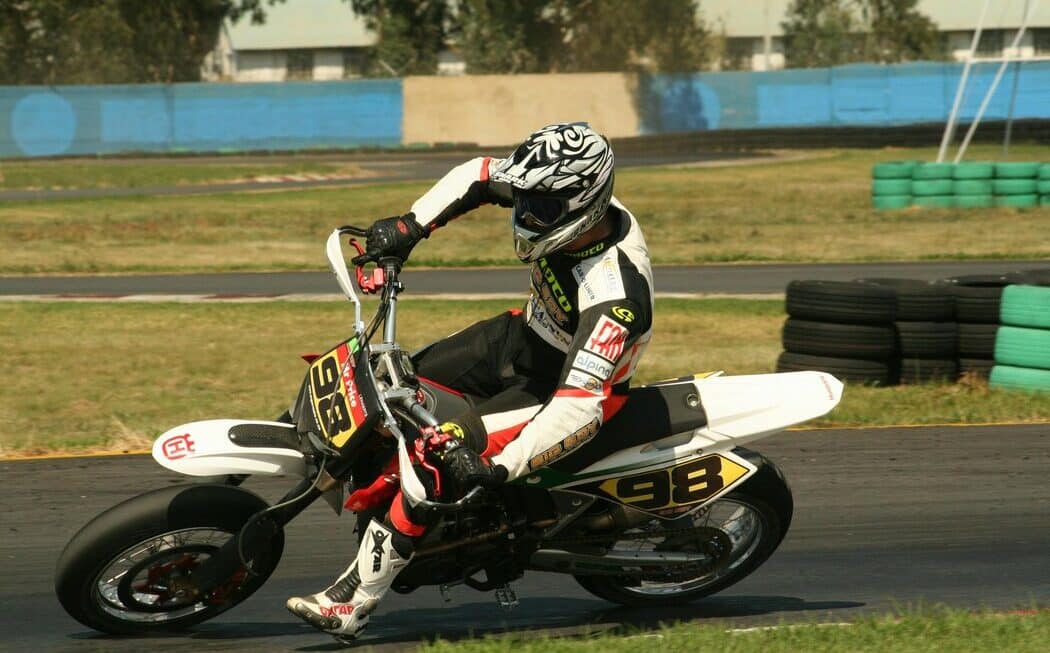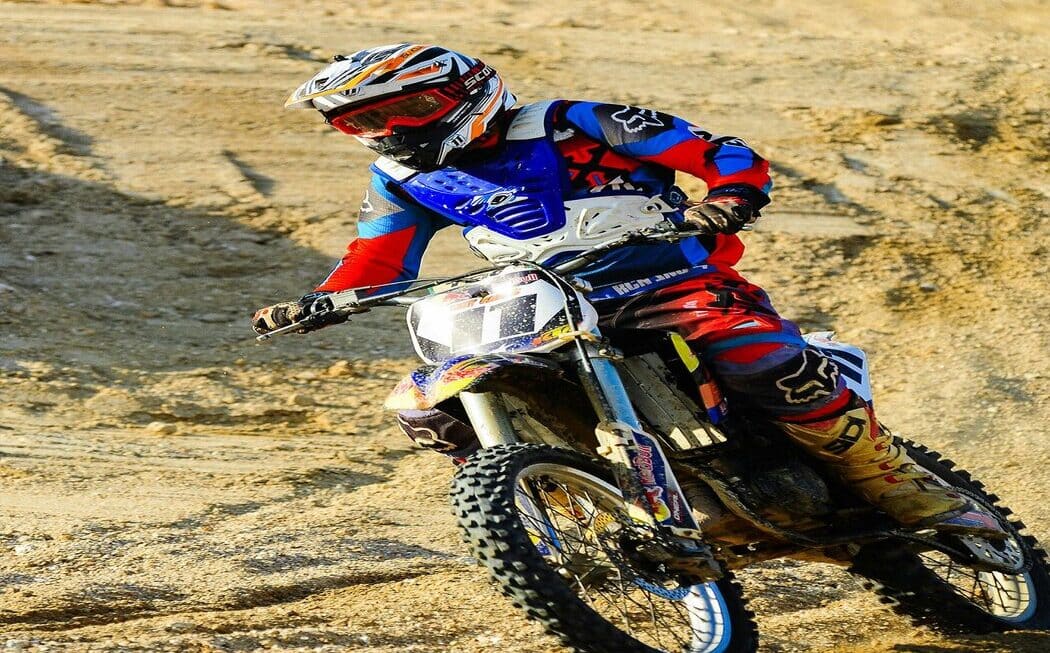The powerband is an important concept for dirt bike riders. It refers to the range of revolutions per minute (RPM) in which a dirt bike engine is capable of producing its peak horsepower and torque. Knowing where the powerband lies can help riders optimize their riding experience, pushing their engines to their maximum output while also avoiding costly damage from running out of steam.
The powerband not only varies by type of dirt bike and specific engine model but is also affected by factors such as temperature and air pressure. A skilled rider understands how these environmental conditions have an impact on the engine’s performance capabilities. With enough practice, one can master the art of driving around in this sweet spot optimal performance region that offers good performance throughout the RPM range without straining the engine too much when revving it higher.
What is a Powerband on a Dirt Bike?
The power band on a dirt bike is an essential part of its overall performance and understanding how it works can make a huge difference when riding. Put simply, the power band is the range of RPM (revolutions per minute) where the engine produces its maximum output. To achieve this, the bike must have high torque at low revs combined with rising horsepower at higher revs to match peak torque with peak horsepower for maximum power production.
Power is generated through both force and speed so when the right combination of parameters is present, maximum power can be achieved at higher RPMs than would ordinarily be expected from normal bikes. This is achieved due to lightweight parts such as connecting rods and pistons to reduce friction and stress on these components which makes it possible for some motorbikes to exceed 14,000 RPM in their powerband for winning performance!
Is It Better For Me To Stay In The Power Band?
Staying within the power band when riding a dirt bike is essential if you want to achieve maximum performance. Professional riders have perfected this technique and can manipulate the clutch and maintain their RPMs in the power band for long periods, maximizing their speed and acceleration. Not only is it necessary to know where the powerband for each gear is located, but great riders also use the torque from the engine to drive around tight corners without sacrificing any power output. By briefly releasing the grip on the throttle and then giving it a massive blast of power when exiting a corner, they can gain an extra burst of speed that will often make them cross a finish line first.
The key to mastering staying in the motorcycle’s power band is understanding how it works. Learning your bike intimately will aid you in knowing exactly when and how much power needs to be delivered, as well as ways to manipulate it for better control over your ride. Once you understand your bike’s dynamics, you’ll be able to take advantage of all available opportunities for increased speed while keeping yourself inside the sweet spot of horsepower every time you race.
How to Maximize Your Power Band
Having a Proper RPM range
Having the proper RPM range set for your dirt bike can dramatically improve your performance and increase the power of your power band. To start, you can identify what RPM range is ideal for your particular bike. If the engine produces no power until 8000 RPM, then it’s best to shift down to third gear to take advantage of this useful power band. To accelerate, you need to ensure that the engine has access to its power at that point.
When you’re in a proper range of 8000-9000 RPMs, you will have more control over the acceleration and subsequent speed of your dirt bike as well as experience a smoother ride than if you were just spending time revving up or going in too low. You’ll also be able to reach higher levels of performance when going into turns where balance and control are key factors. Setting the engine up for these controllable ranges elevates your biking experience and gives you more control over being able to manipulate air or even riding conditions with ease through these parts of the power band.
Terrain Obstacles
Terrain obstacles can present a variety of challenges while riding. One of the key aspects to consider is the soil composition, which will greatly affect how your bike handles. Whether you’re horsepower capabilities or handling on a particular terrain depends greatly on the soil type. For example, mud or sand terrain is best suited for mid-to-low range powerbands as they have less hesitation and give a more stable ride. On the other hand, if it’s a tight course with lots of bending, a smaller lower-end powerband may be more suitable as it will provide better control over those tight bends.
Another element that should be taken into consideration when riding through or around terrain barriers is the elevation change between them. Knowing what kind of vertical drop or incline there will be can help riders choose the right gear and provide an idea of how physically demanding it might be. Additionally, one should keep note of any jumps between topics as these can create new perils and limits to negotiate with care. These variations in walls, screens, and jumps are an essential part of taking on off-road challenges.
Identifying Your Ability Level
Identifying your ability level is an important step in selecting the proper powerband of motorcycle for your needs. Finding the right type of power band will vary from rider to rider depending on experience and skill level. For novice riders, a lower-end powerband, typically one with low-to-mid range levels, would be best suited for their needs and make learning easier. It will also allow them to progress more safely and master the fundamentals of riding with less risk involved.
For those who are more experienced riders, a top-end powerband may be beneficial. They will find it provides more challenge and gives them access to terrain that requires greater traction control. Top-end powerbands require familiarity with riding in challenging conditions, so it’s only recommended once you’ve already developed some sense of comfort or expertise in riding your bike. It can also help you become faster as you become more familiar with the terrain and have better control over your bike while staying within a safe speed range.
Engine Maintenance
Engine maintenance is a key responsibility of any vehicle owner. Maintaining the engine properly ensures that it runs efficiently and performs as expected. High RPM engines generally require more frequent maintenance than those geared for lower and mid-range powerbands. To achieve the optimal performance of a higher RPM engine, greater clutch use is necessary to bring the REV range into play. As such, continued heavy use will lead to more frequent replacement of parts such as piston rings, gear plates, and reeds over time.
In contrast, lower RPM engines require less maintenance because parts need not be replaced as frequently. Though this can save money in the short term, bear in mind that too little attention may result in wear and tear on the car’s components resulting from infrequent oil changes or improper air filter care. Generally speaking, regular fluid changes and scheduled tune-ups are integral to ensuring an engine runs at peak efficiency with minimal breakdowns or repair needs. In general, proper engine maintenance is a must for any vehicle owner looking to get years of reliable service from their car’s motor!
Is There A Power Band On Four-Stroke Bikes?
Four-stroke bikes have what’s known as a powerband – the range of engine speeds at which the engine produces the most power. This range is commonly referred to as “the sweet spot” since it’s where acceleration is most efficient and smooth. Unfortunately, this sweet spot seems to be very narrow for four-strokes compared to two-strokes because they take longer to build up compression and then explode. This can lead to slower acceleration and less power than you’d expect from a two-stroke motor.
Fortunately, there are a few ways riders can get around this issue with four-strokes; by altering such things as the carburetor, exhaust system, or cylinder head of the engine, they can increase their bike’s RPMs and maximize its output. Such modifications require some knowledge about engines, but with specialized parts and expertise, riders can achieve improved performance with their machines.
Conclusion
The four-stroke off-road motorcycle has a powerband. This powerband has a particular RPM range in which the bike produces its maximum power. Staying within this range is essential for both safety and performance, as it helps ensure a smooth ride that won’t over-rev in slippery conditions. Knowing the bike’s performance capabilities can reduce stress on the rider and machine while at the same time benefiting from optimal riding.
Consequently, one of the best ways to take full advantage of a four-stroke off-road motorcycle is to learn how to ride it within its powerband. It can feel more comfortable for both rider and machine and puts them in sync with each other for better overall performance. Understanding the meaning of “powerband” is therefore essential for anyone considering taking up off-road motorcycle riding – especially if they are serious about maximizing their experience.



